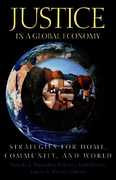Problem Set #3 Econ 202 - Spring 2018 4. Next we examine the dynamics of the system. Suppose the initial capital stock K0 = 100, and s is once again equal to 0.2. Compute the path of capital, consumption, output, and investment, until t = 100. (Hint: using Excel, have a separate column for Kg, Kt+1,Y;,Ct, and It, as well as cells containing the value of s, a, 6, A, and L. Using K0, calculate Y0. Then use equation (1) above to get K1, and put it in the rst row of the Kt+1 column. Fill the value for K1 down to the second row of the K, column, and repeat.) Do they converge to the steady state values you calculated above? Is convergence quickest in early or late periods? 5. What is the optimal savings rate for the economy i.e. the savings rate that maximizes steady state consumption (we calculated it in class). Call this 3*. 6. We now examine how the dynamics of the system change for different savings rates. Calculate the path of consumption if everything is as above, except for 3. Use three different values of s: s; = 0.1, 3;, = 0.6 and 3*, the consumptionmaximizing savings rate you calculated above. Plot the dynamics of consumption and output for these three different values of savings, and the baseline level of savings 3 = 0.2, on the same graph. (Hint: just copy and paste the Excel worksheet you used in part 4, and just change the savings rate). What is the relationship between consumption and savings? What is the relationship between output and savings? What is the intuition for this? 7. We now consider the response of key variables to shocks. Suppose that at t = 0, we are at our old steady state (with s = 0.2). Then at t = 1, 25% of our capital stock is exogenously destroyed in the Blitz. Plot the dynamics of capital, output, and investment in response to this shock. (Hint: Copy your baseline simulation worksheet. Set K0 = R. Then set the rst entry of the Kt+1 column equal to 0.7512"). This plot is known as an \"impulse response.\" Given this result, would you expect output to grow especially quickly in the aftermath of wars? 8. Suppose now that at t = 0 we are at our old steady state. Then in period t = 1, the economy experiences a one time shock and suddenly becomes twice as productive: A1 increases to 20. In period t = 2, A2 falls back to 10, where it remains for the rest of time. Plot the dynamics of capital, output, and investment in response to this temporary productivity spike. 9. Finally, suppose that at t = 0 we are again at our old steady state. Then at t = 1, productivity again doubles to At = 20, and remains there for all time. Again, plot the dynamics of capital, output, and investment in response to this permanent productivity increase. Comment on the differences between the permanent increase of productivity and the temporary increases







